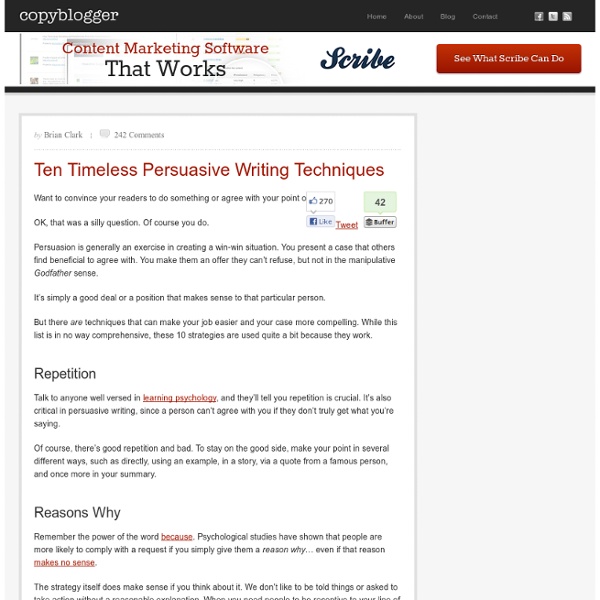



The 8 Questions That Create Perfect Landing Page Copy Since you’re reading this post, I think it’s safe to assume that you’ve taken a crack or two at writing landing page copy. It’s probably also safe to assume that you’ve come to the realization that writing highly effective landing page copy can be quite a daunting task. If I’m right, then you’re in luck! The questions are divided into two groups: 4 you should ask yourself before you start writing your first draft, and 4 you should ask yourself after you’ve written your first draft. But let’s kick things off with a case study! Case Study: Saxo Bank PPC Landing Page You can skip straight to the questions if you prefer. Client: Denmark-based online investment bank Saxo Bank. Product: An award-wining online currency-trading platform sold via their sister site Forextrading.com. Landing Page: A PPC landing page that pitches a free trial version of the currency-trading platform. Optimization Goals: 1. Treatment A: The most significant adjustment is the copy itself. 1. 2. 3. 4. 1. 2. 3. 4.
Email Copy Tested: How adding urgency increased clickthrough by 15% You have exactly 60 seconds to retweet this blog post. If your tweet isn’t detected by our internal twitter monitoring algorithm by then, your hard drive will be completely erased. Don’t believe me? That is probably because I’m lying. I have no way to erase your hard drive and no algorithm (I know of) that tracks whether you will retweet this post. I’m feeding you a false sense of urgency to get you to take an action. The truth is, urgency is a powerful copywriting tool. But when used authentically, urgency can be quickly added to almost any piece of copy for a lift in conversion. For example, here is a recent email test for a MarketingExperiments Web clinic invite: In this test, all we added was three words near the call-to-action to intensify the urgency of the click. All we had to do was mention it in the copy. Where are you missing out on urgency in your copy? Related Resources Sales Call Optimization: How to get more prospects on the phone with a banner
5 Forms of scarcity to skyrocket your sales Scarcity is a glorious form of persuasion and when exploited can yield incredible benefits to your conversion rate. Here’s a Merriam Webster’s definition of scarcity… “The quality or state of being scarce; especially: want of provisions for the support of life” That’s extremely useful…but in a nutshell if you reduce the quantity supplied of a product or its availability you create a scarce product. Here are some clever and awesome scarcity techniques to increase sales. 1. Displaying low amounts of stock available creates a sense of scarcity. “Act Fast! 2. Revealing low stock levels is a simple and great win but the visuals could be much better. You can check the stock in your area and reserve it. Notice how it’s in stock on home delivery, out of stock in one area but only 1 left to collect in another branch close to my location. 3. Notice the 2 messages that pop up at the bottom corner. 4. Each product has a timer countdown and pits users against each other. 5. Here’s what they did…
5 Research Studies that Will Drastically Affect How You Write Copy When it comes to writing persuasive copy, smart writers know that the devil is definitely in the details. Doing things correctly requires testing, testing, and more testing, but also a bit of inspiration (so that you have ideas on what to test). Today, I’m offering up some scientific research on the latter, presenting 5 academic studies on copywriting + persuasion that you can implement and test in your copy. While I slogged through research papers to find these insights, you won’t need to waste nearly as much time, because it’s all presented in laymen’s terms that you can quickly read and evaluate. Let’s dig in! 1. When it comes to writing persuasive copy for your site, I’ve discussed before how walls of text can be conversion killers, even if longer landing pages tend to result in more qualified leads. This recent research (2013) examined over 42 separate studies where a single technique was used, resulting in a combined 22,000 subjects from which the data was gathered. 2. 3. 4. News flash:
6 Psychology Studies with Marketing Implications In university, I chose to major in psychology because, the way I saw it, psychology is relevant to pretty much every career path. Psychology is the study of human behavior, and there are very few jobs in the world that don’t have to do with human behavior. Unless your job is to count every grain of sand on a desert island, you’re always going to be dealing with people. In no field is the overlap between psychological theories and real-world applications more apparent than marketing. Here are six landmark experiments that reveal key insights about human behavior and the psychology of marketing. 1. Reciprocity – the idea that if I give something to you, you feel obligated to give something back to me – is a fundamental part of human nature. In 1971, Professor Dennis Regan at Cornell University demonstrated the power of the reciprocity principle in what was ostensibly an “art appreciation experiment.” So what does this experiment tell us about marketing? 2. 3. Context is everything. 4. 5. 6.